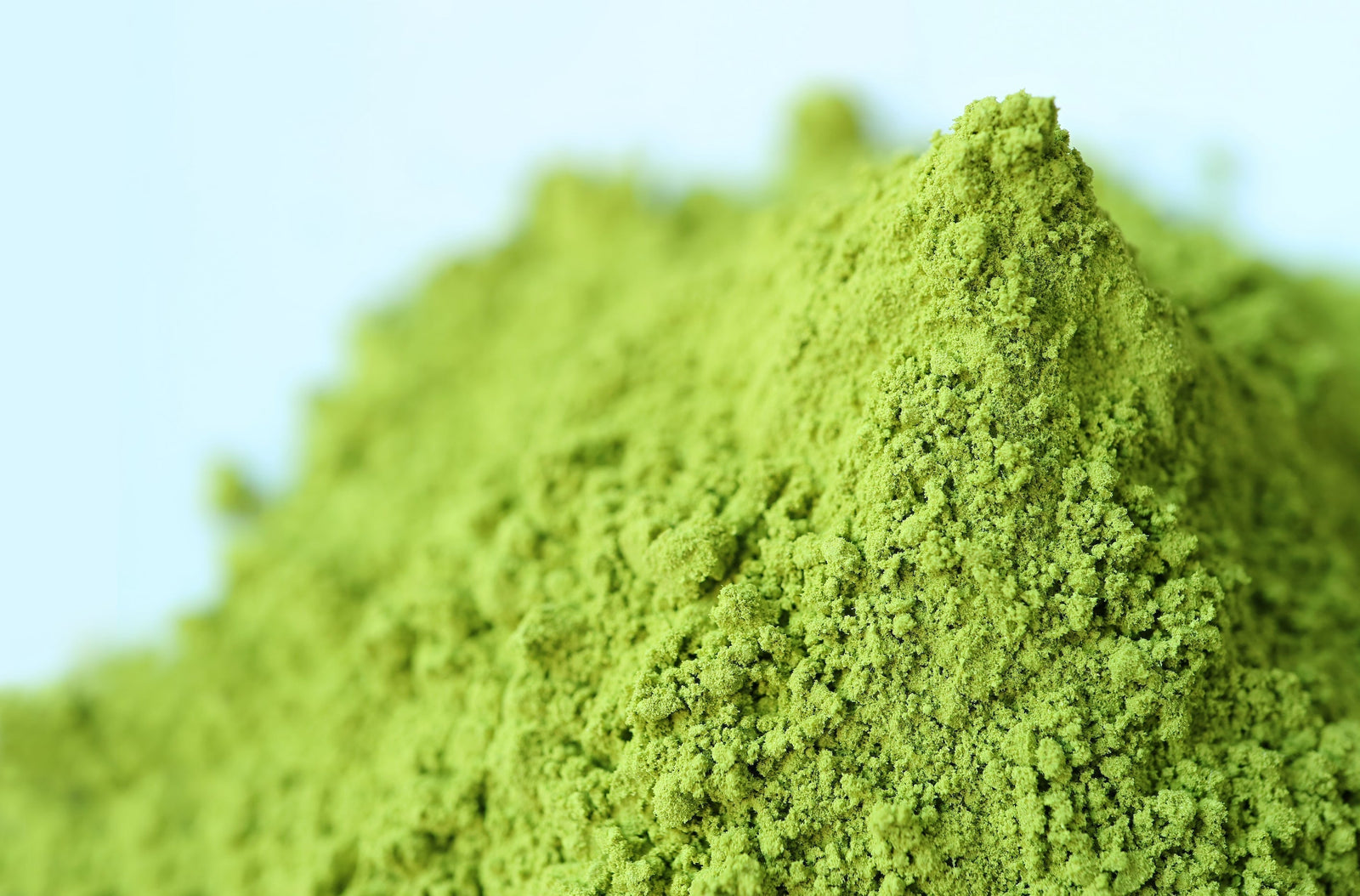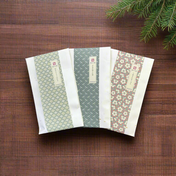5 minute read
To read the Japanese version, please click here.
We recently asked our science team to investigate how matcha storage temperature and duration influence quality. They reviewed scientific articles in both English and Japanese and report that ideal storage practices are basically consistent with expectations for a high quality, minimally processed, natural food product; use an airtight container, avoid sunlight, moisture and oxygen and keep at cold temperature for intermediate or long-term storage.
Short summaries of three key articles are followed by a paragraph explaining the details of matcha quality degradation, a perspective on traditional matcha storage and preparation, and finally, informal storage recommendations.
Literature Review
1. Haraguchi, Yasuhiro, Hitoshi Sano, Kenichi Nakazato, Kazuo Tomaru, Masako Yorishita, Masato Arakawa, and Shin-ichi Sawamura. "Effects of storage conditions on quality of matcha." Chagyo Kenkyu Hokoku (Tea Research Journal) 2002, no. 93 (2002): 1-8. https://doi.org/10.5979/cha.2002.1
A well-designed study from the Quality Control department of the Ito-en company used industry standard High-Performance Liquid Chromotography (HPLC), colorimetry, oxygen consumption and sensory tests to evaluate the shelf life of sealed bags of ground matcha. Ito-en controls around 25% of the domestic bottled tea market, so they have the interest and expertise to understand storage. This study examined the effects of storage temperature and duration on quality indicators such as chlorophyll a and b content, color, vitamin C and taste, as judged by trained tasters. Treatments included -70°C, 4°C, 25°C and 37°C for 0 to 24 weeks. They found negligible changes of quality indicators after 24 weeks of storage at -70°C, unacceptable degradation after 12 weeks at 25°C and unacceptable degradation after 3-4 weeks at 37°C. The authors highlight how oxygen availability induces chemical reactions that degrade quality (specifically chlorophyll and Vitamin C) and how the rate of these reactions increases with increasing temperature. A key take-away message from this study is that the quality of unopened, sealed bags of ground matcha is stable at or below 4°C but that quality degrades rapidly at temperatures above 25°C, even in sealed bags.
2. Kim, J.M., Kang, J.Y., Park, S.K. et al. Effect of storage temperature on the antioxidant activity and catechins stability of Matcha (Camellia sinensis). Food Sci Biotechnol 29, 1261–1271 (2020). https://doi.org/10.1007/s10068-020-00772-0
This paper from a leading Korean university examined color changes, phenolic, flavonoid and antioxidant activity of matcha in sealed containers at different storage temperatures (4°C to 80°C) and over time (1 day to 2 months). In addition to many of the same parameters of the Haraguchi study, such as colorimetry, spectrophotometry and HPLC, this study also included quantification of moisture content and antioxidant activity. They observed that all quality indicators reduced with greater time and temperature and found that storage at 4°C was statistically best for all metrics. While the temperature range they used was higher than what any consumer or café would use, they did suggest that 7 days of storage at 25°C is acceptable.
3. Ananingsih, Victoria K., Amber Sharma, and Weibiao Zhou. "Green tea catechins during food processing and storage: A review on stability and detection." Food research international 50.2 (2013): 469-479. https://doi.org/10.1016/j.foodres.2011.03.004
A food science-oriented review from authors in the chemistry department of the National University of Singapore investigates how storage conditions influence the biochemical reactions related to green tea catechins. They outline the details of how catechins can undergo degradation, oxidation, epimerization and polymerization and how these processes are influenced by temperature, oxygen availability and moisture content. The authors also reviewed models to estimate quality impacts of different processing techniques (e.g. heat treatment, sterilization) for different types of products (e.g. bottled drinks, baked goods).
Science of matcha quality
The main mechanism causing reduced matcha quality are natural bio-chemical reactions that degrade key flavor, appearance and health related components like chlorophyll, catechins, theanine and antioxidants. Higher temperature and/or greater moisture and oxygen availability accelerates oxidation, polymerization and epimerization, which degrades color, flavor and health related indicators. The higher the storage temperature the more rapid the degradation. Chlorophyll degradation is the reason why color deteriorates. Theanine and catechins are taste compounds particularly sensitive to degradation at higher temperature and over time, while caffeine is less sensitive. Moisture content can increase when condensation forms on a cold stored container brought to room temperature, if a container is not well sealed, or if a wet spoon is used to scoop matcha.
Traditional Perspective
For a non-academic perspective, the science team also considered traditional practices of matcha preparation and storage for tea ceremonies. Tencha reserved for tea ceremonies was typically stored in specially designed ceramic jars, packed with washi paper in a certain way and stored in a cool and dry environment. A couple of days before the event, the needed amount of matcha would have been ground and stored in caddies made of lacquered wood (see this previous post https://yunomi.life/blogs/ocha/storing-your-tea-and-traditional-japanese-craftsmanship-chazutsu), which helps to create an airtight seal, or even more traditionally, in ceramic tea caddies. The narrow neck, small mouth and tight-fitting lid of these ceramic tea caddies achieved similar goals of minimizing air mixture. One of the most famous of these ceramic tea caddies has a lineage that spans historical eras, was gifted to Oda Nobunaga, the 1st great “unifier” of Japan as a plea for mercy and is currently housed in a museum in Tokyo (see this detailed description https://turuta.jp/story/archives/4989 if you are curious).
Suggestions on how to store matcha
A standard consumer enjoying matcha daily should store their matcha in an airtight tea caddy (using an aluminium lined bag inside that tea caddy could reduce the exposure to air even more) in a cool, dry location. For storage lasting 2-6 months, place the matcha in a refrigerator with multiple layers of airtight storage to avoid exposure to refrigerator odors; when removing matcha from long-term storage to everyday use, allow the matcha to acclimate to room temperature for a 2-4 hours before opening.
A café or restaurant that stores larger quantities over 6-12 months, should store the matcha in the freezer, and remove a weekly amount (allowing acclimation to room temperature before opening).
The shelf life of matcha in its original vacuum packed or sealed tin can be stored for a year in the freezer unopened, and still retain much of its original flavor.
Tsukumo Kaminasu (九十九髪茄子) 松永茄子・九十九髪 Also known as Matsunaga Eggplant and Tsukumogami (99 hairs). Photo from https://turuta.jp/story/archives/4989
Other resources consulted
- Devkota, Hari Prasad, et al. "The science of matcha: Bioactive compounds, analytical techniques and biological properties." Trends in Food Science & Technology 118 (2021): 735-743.
- Jakubczyk, K.; Kochman, J.; Kwiatkowska, A.; Kałduńska, J.; Dec, K.; Kawczuga, D.; Janda, K. Antioxidant Properties and Nutritional Composition of Matcha Green Tea. Foods 2020, 9, 483.
- Krahe, J.; Krahe, M.A.; Naumovski, N. The Implications of Post-Harvest Storage Time and Temperature on the Phytochemical Composition and Quality of Japanese-Styled Green Tea Grown in Australia: A Food Loss and Waste Recovery Opportunity. Beverages 2021, 7, 25.
- Lee, S. U. (2016). The change of catechin and theanine content in green tea during different storage conditions. Culinary science and hospitality research, 22(5), 267-276
- Liu, Zheng-quan, et al. "Quality changes and predictive modeling of shelf life of matcha stored at different temperatures." (2020): 198-204.


